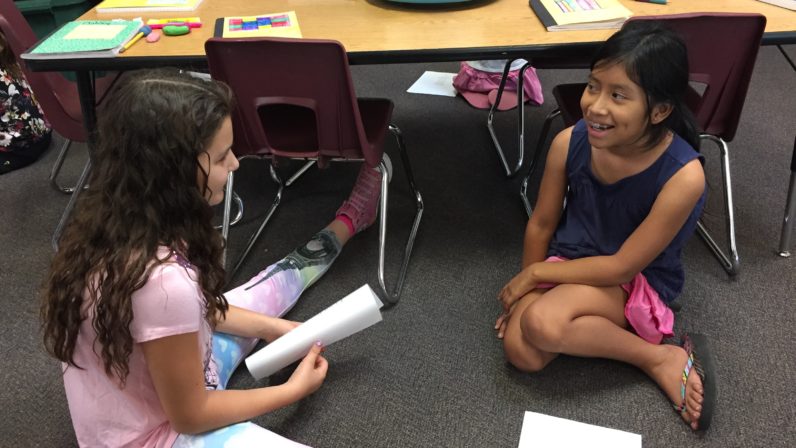When faced with a situation that feels problematic, I often rely on a simple question: What is true? Of course this is a tricky question because everyone has their own truth. So perhaps a better question would be: From my perspective, what is true? I find that just asking this question slows down my racing mind. It helps me settle into a grounded mental space with the situation, so I can think more clearly. It also helps me focus on direct experience, rather than latching onto assumptions. With so many of us living with a heightened level of stress, fueled by uncertainty, it’s easy to become overwhelmed. When I pay attention to my immediate world it reduces fear and the helpless feeling that I’m only one person in this great big world. So I turn to what is true at the Seed:
We engage children and teachers in dialogue each and every day. We talk about what’s going on in our classrooms and on the playground. If a child shows kindness or generosity, we notice that and say so. If a classroom item mysteriously goes missing, a discussion follows and everyone becomes part of the solution. When certain behavioral patterns emerge, such as excluding friends, we intentionally talk about social skills that will eliminate the problem in the future. Dialogue keeps us on track.
As a school, we continually look for ways to learn about and practice social justice. This past week was the 56th anniversary of Ruby Bridges’ desegregation of an all-white elementary school in New Orleans. She was six years old. During her first year, Ruby was escorted by federal marshals to keep her safe from angry mobs. I sat with our 3rd/4th graders on Wednesday and read a picture book of her story. Then we discussed the significance of her courageous acts as a young child. We talked about the importance of standing up for what you believe and using your voice as part of the process. We continued our work with heart maps, focusing on gratitude. Many children included the earth and practices to help our planet in their maps. In the coming weeks, they’ll continue their work by writing what’s in their hearts. Their stories, their voices, will touch and inspire lives.
We guide children by helping them put into practice ideas that come up in conversations. Sometimes it’s just a matter of supporting them as they do the work themselves. In the kindergarten class I noticed a child standing by the table crying. I asked her what was making her have tears and she said another child took her place at the table. When I suggested we talk to the child, she bravely used her words: “You took my place. I wanted to sit there.” The child looked at her with kind eyes and agreeably moved to the other side of the table. As it turned out, they both wanted to sit by the same friend. In the end, they were both able to sit near their friend.
As a nation we seem to be in a place where active, empathetic listening is a requirement. Additionally, these times ask for strong, clear voices coming from compassionate hearts. We can’t change all of today’s problems, but what is true is our Seeds are learning a way to be in the world that has the potential to bring about change and healing.

